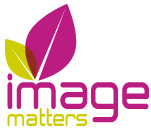Since Bill Beck will be on the EDCF Bus Trip for the various sound system demos and visit to the Academy, we’ll hopefully get enough info to fill a new article on the current state of the technology and politics of laser. For example, the LIPA group’s lawyer [Laser Illuminated Projectors, Laser Illuminated Projector Association] gave an excellent slide presentation and talk on the legal aspects of public use lasers.
[Original Article] The Art of Reading Press Releases Kit includes chicken bones and Roman dice. But what are we to make of the first paragraph of LLE’s fresh press release issued days in front of the SMPTE/NAB Technology Symposium on Cinema on April 14th?
Laser Light Engines, Inc. (LLE), a venture-backed, laser-illumination developer today announced the world’s first public demonstration of fully-despeckled, high brightness 3D, high frame rate (HFR), wide color gamut (WCG) laser projection on a silver 3D screen at the upcoming NAB Technology Symposium on Cinema (TSC), on April 14, 2012 from 4:14pm-5:45pm PDT in Room #S222.
Bill Beck, founder and EVP of Business Development for LLE will be presenting an invited talk on Laser Illumination Systems for 2D and 3D Digital Cinema. “We appreciate the opportunity to educate and update the NAB Digital Cinema community with both a tutorial and a live demonstration of laser 3D on a silver screen in conjunction with SONY,” Beck said. “Since its founding, LLE has been committed to laser-driven light sources that exceed the requirements of digital cinema”. LLE was the first to achieve full laser despeckling on a white screen in 2010, but with the rapid proliferation of 3D, and other advancements to be discussed at this year’s TSC, had to develop additional technology to meet new, more challenging requirements.
Venture-backed: Well, we know that LLE has had a number of interesting investors over the last few years. All laser technologies have been money consumers as obvious and thrilling ideas need a extraordinary effort to get past the vagaries of such precision.
Laser-Illumination developer: There are many, of course. Polaroid Kodak used the engines of a California company rather than LLE’s system for their one-off, pre-prototype projector system. Sony R&D has had releases in the past about their engines, so the fact that this Technology Symposium exhibition is with Sony is interesting…though both companies are careful to point out that this is a technology showing (nothing more, nothing less.) Barco has had some great demonstrations in the recent past, and RED is promising to blow everyone out of the water with their offering. Christie’s mother company Ushio is known to have laser technology, but ‘focused’ more in the IR region.
“world’s first public demonstration of fully-despeckled, high brightness 3D, high frame rate (HFR), wide color gamut (WCG) laser projection on a silver 3D screen”: To parse this, it may appear that the “silver 3D screen” portion that modifies enough to make the “world’s first public demonstration” be valid. But it also may be the “fully-despeckled” phrase. Other companies give their buzz-words that indicate that they have gotten the speckles down to a responsible level, currently an unmeasurable quantity since there is no agreed-upon way to compare one to one. An industry group has been set up to change this, but until then we only know that getting the speckle out of green is the most difficult, and we know that LLE says: Fully-despeckled. One presumes: Zero doesn’t need an industry standard.
But is there a downside to being fully despeckled? Despeckling must, to some degree, be as simple as broadening the Q of the light since it is the narrowness that causes the effect of speckling. But that would have a negative effect as the light approaches the mirrors perhaps. We’ll see if anyone can phrase a question that makes Bill speak to their secret sauce. I suspect 4th and 5th dimension activity.
But what about “wide gamut”? The DCI spec does the opposite of constrict the gamut. It invites manufacturers to get as broad as possible in the XYZ space. But there are limits and distortions with every light. Going “negative” on one or more points to get better effects along the line of purples will have effects in the greens, where the eye is most sensitive. Hopefully Bill Beck will give details here too.
But it is that “silver 3D screen” part that is the rub. Silver implies aluminum and high-gain. Aluminum holds the photon polarity of the RealD and MasterImage systems, so even if the laser light engine were to give them full brightness at the screen with a low gain screen, they would still have to use the silver screen to keep their left-right effect working. Some would say that it is the high-gain problem, giving much of the auditorium less than responsible light levels as the window of ‘gain’ decreases…and they would be right. 23 degrees off the horizontal and/or vertical center and the viewer typically has half the light or less.
But the aluminum also distorts the screen’s image, usually making it impossible to get the 70-90% luminosity level at the sides (as measured from the center), or to get a responsible white point anywhere. This is much of the reason that France’s CNC has banned the silver screen for cinemas showing 2D films and will probably force them out completely as time goes on.
Notwithstanding, this is an interesting release and an interesting step for both technical and political reasons. It will be interesting to see if LLE can parlay this into interesting motion at CinemaCon the following week.
Also interesting is that both parties, Sony and LLE, are being careful in their press releases to say that this joint project is only for this demo. No way to tell how to parse that for absolute truth.


